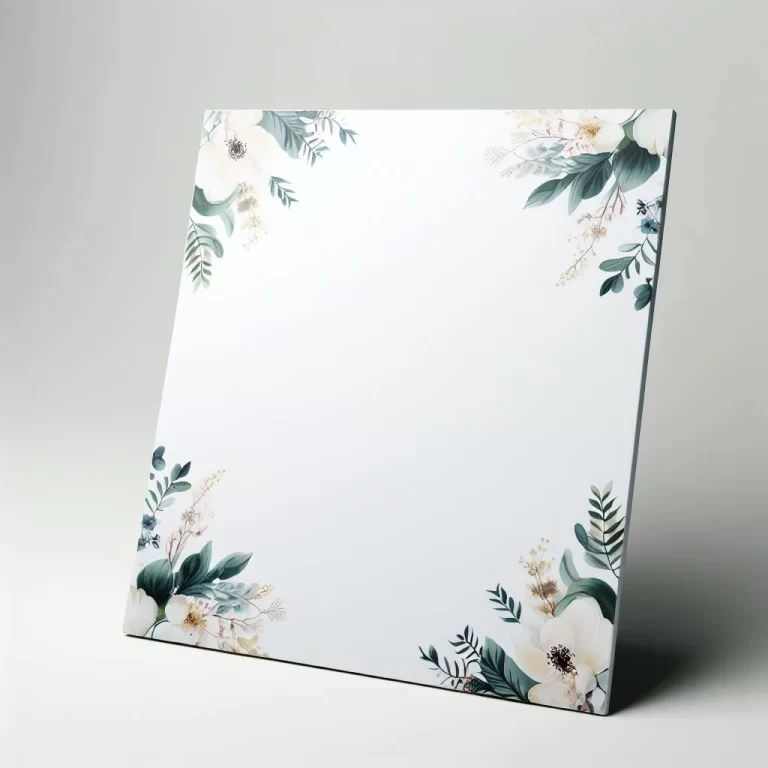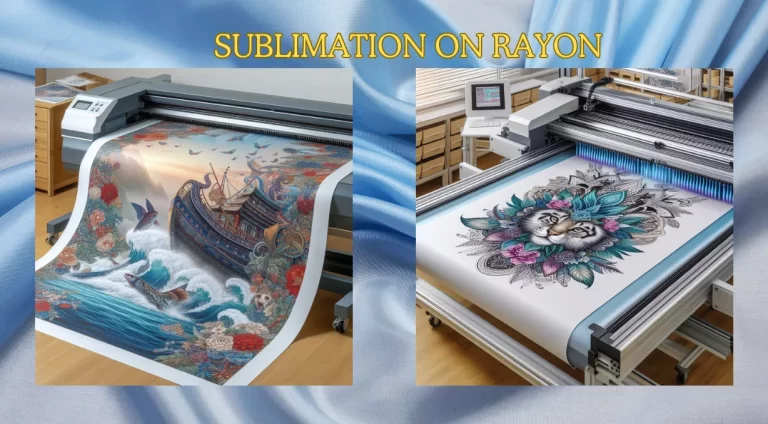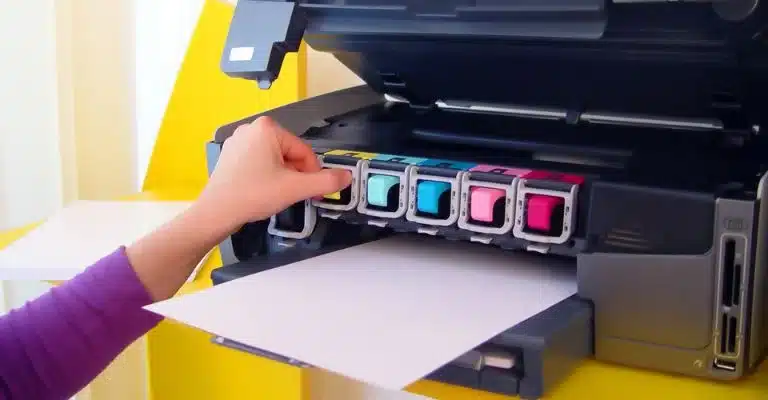Tie-Dye Sublimation: Fix Dull Prints, Color Bleeding & Fading Fast!
Tie-dye has made a vibrant comeback but with a modern twist! Tie-dye sublimation takes the classic swirling patterns and elevates them with a process that delivers bolder colors, intricate designs, and incredible longevity. Here’s how it works:
- The Process: Instead of messy dyes, sublimation uses special inks that transform into a gas when heated. This gas bonds permanently with the fibers of your fabric (which must be a high-polyester blend). The result? Designs that won’t fade, crack, or peel, even after numerous washes.
- Advantages over Traditional Tie-Dye: Sublimation tie-dye offers unparalleled precision, allowing for complex patterns and even photographic images. Plus, you won’t have to deal with soaking fabrics, bleeding colors, or hoping your design turns out after a long wait.
If you’re ready to experience the magic of tie-dye sublimation, Subli Genius Print is your go-to source. We provide top-of-the-line sublimation printers, vibrant inks, premium papers, and a wide range of sublimation-ready blanks.
Tie-Dye Sublimation: A Modern Twist on a Classic Technique
Tie-dye sublimation merges analog aesthetics with digital precision, ideal for commercial production or designers seeking reproducibility. While it can’t fully replicate the handmade charm of traditional tie-dye, it offers durability, versatility, and scalability for modern applications.
1. Understanding the Techniques:
- Traditional Tie-Dye: Involves physically twisting, folding, or tying fabric (typically cotton) and applying reactive dyes to create organic, unpredictable patterns. The dye bonds chemically with natural fibers.
- Dye-Sublimation Printing: A digital method where heat (350–400°F) transfers sublimation inks (in gas form) onto polyester or polymer-coated surfaces. The dye permeates the material, resulting in vibrant, fade-resistant designs.
2. Combining Tie-Dye and Sublimation:
- Concept: Use sublimation to mimic tie-dye aesthetics digitally. Designers create or scan tie-dye patterns, print them on transfer paper with sublimation inks, and heat-press them onto synthetic fabrics (e.g., polyester).
- Key Steps:
- Design Creation: Use graphic software (e.g., Photoshop) to craft or digitize a tie-dye pattern.
- Printing: Print the design onto sublimation transfer paper.
- Heat Transfer: Apply heat/pressure (via a heat press) to sublimate the ink into the fabric.
3. Materials Required:
- Sublimation printer, inks, and transfer paper.
- Polyester fabric (65%+ polyester for best results) or coated substrates (mugs, phone cases).
- Heat press (or sublimation oven for 3D items).
4. Advantages:
- Precision & Repeatability: Achieve consistent, intricate patterns vs. traditional tie-dye’s randomness.
- Durability: Sublimated dyes resist fading/washing better than traditional dyes.
- Versatility: Apply designs to fabrics, hard goods (ceramics, metal), and apparel.
- Eco-Friendly: Minimal water waste compared to traditional dyeing.
5. Limitations:
- Fabric Restrictions: Requires polyester or coatings; not ideal for cotton.
- Texture/Feel: Polyester lacks cotton’s softness, which some users may dislike.
- Startup Cost: Sublimation equipment (printer, heat press) can be expensive.
6. Applications:
- Custom apparel (leggings, activewear, shirts).
- Promotional items (masks, bags, drinkware).
- Home décor (pillows, curtains).
7. Hybrid Approaches:
- Sublimation Overlays: Add sublimated details to traditionally tie-dyed garments.
- Cotton Alternatives: Use sublimation-compatible coatings on cotton, though results may vary.
8. Considerations:
- Color Vibrancy: Sublimation excels in bright, blended hues but lacks the tactile texture of hand-dyed pieces.
- Authenticity: Traditionalists may prefer organic, irregular patterns of manual tie-dye.
What You’ll Need
Getting started with tie-dye sublimation requires a few key tools and materials. Let’s break down the essentials:
- Sublimation Printer: This is the heart of the process. Sublimation printers use special inks designed to transform into a gas when exposed to heat. We offer a curated selection of top-rated sublimation printers, perfect for beginners and experienced crafters alike.
- Sublimation Ink: These inks come in vibrant colors and are formulated to work with your sublimation printer. We carry high-quality sublimation inks that ensure stunning color transfer and long-lasting results.
- Sublimation Paper: Unlike regular paper, this special paper is designed to release the sublimation ink during heat transfer. Find the perfect sublimation paper for your projects.
- Sublimation Blanks: The fun part! This refers to the items you’ll be sublimating your designs onto – shirts, mugs, tote bags, and more. The key is to choose blanks with a high polyester content for the best color vibrancy.
- Heat Press: A heat press provides the necessary high temperature and even pressure to permanently bond the design to your blank.
Subli Genius Print: Your One-Stop Sublimation Shop
We understand that gathering all the right supplies can be overwhelming. That’s why Subli Genius Print aims to make it easy! We’re your one-stop shop for everything you need to dive into the exciting world of tie-dye sublimation.
Step-by-Step Guide
1. Design & Print
- Create Your Design: Use design software, or find pre-made tie-dye sublimation designs online. Remember to mirror your image before printing!
- Print on Sublimation Paper: Load your sublimation printer with sublimation ink and paper and print your design.
2. Prepare Your Blank
- Choose a High-Polyester Blank: T-shirts, mugs, tote bags, and many other items work, but the higher the polyester content, the more vibrant your results.
- Lint-Roll and Preheat: Remove any dust or lint with a lint roller. Preheat your blank with your heat press for a few seconds to remove moisture.
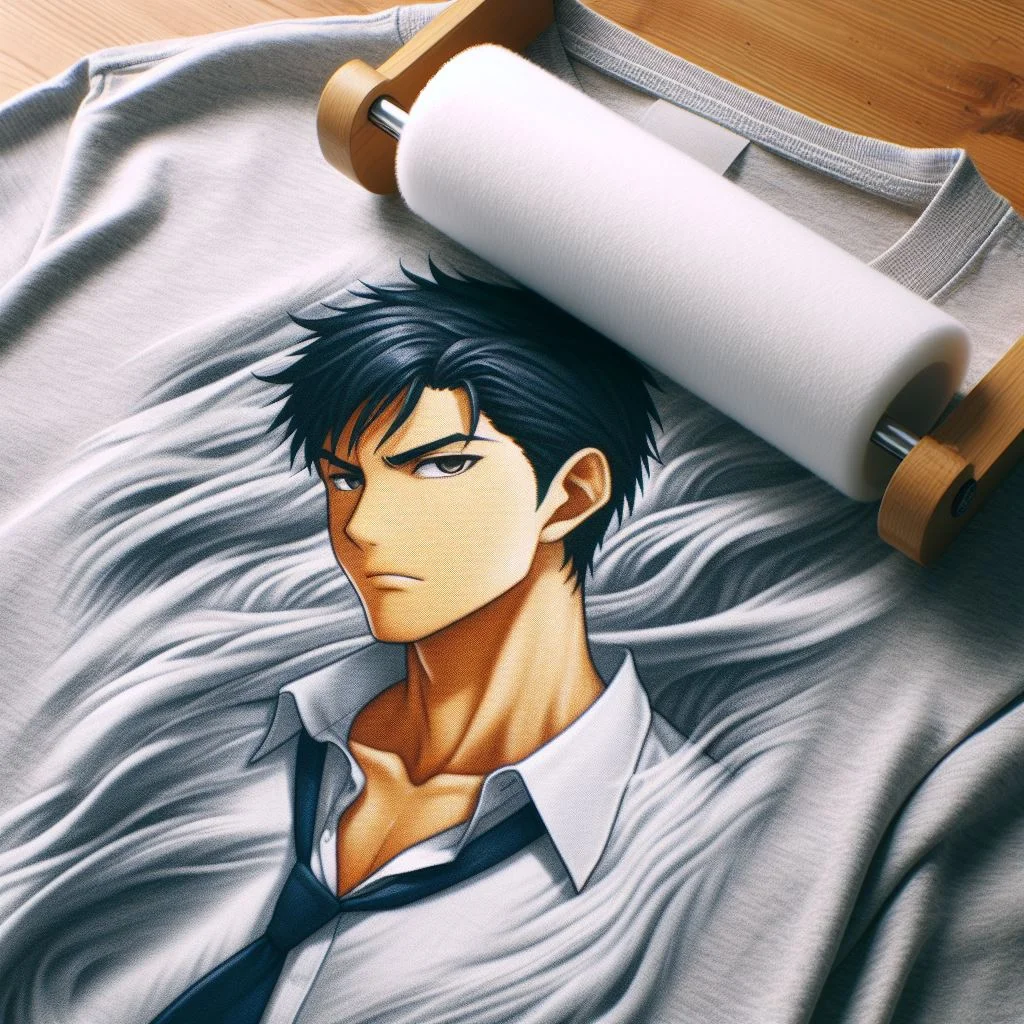
3. Tie-Dye Magic
- Get Creative!: Experiment with classic tie-dye techniques like swirls, scrunches, or stripes. Consider rubber bands, string, or even ice to create unique patterns.
- Secure with Heat-Resistant Tape: Use special heat-resistant tape to secure your design to the blank, ensuring it won’t shift during pressing.

4. Press Time!
- Cover with Butcher Paper: Protect your heat press with a sheet of butcher paper.
- Press According to Instructions: Follow the specific temperature and time recommendations for your blank and sublimation ink.
- Careful Reveal: Allow the project to cool slightly before removing the paper to reveal your vibrant tie-dye creation!
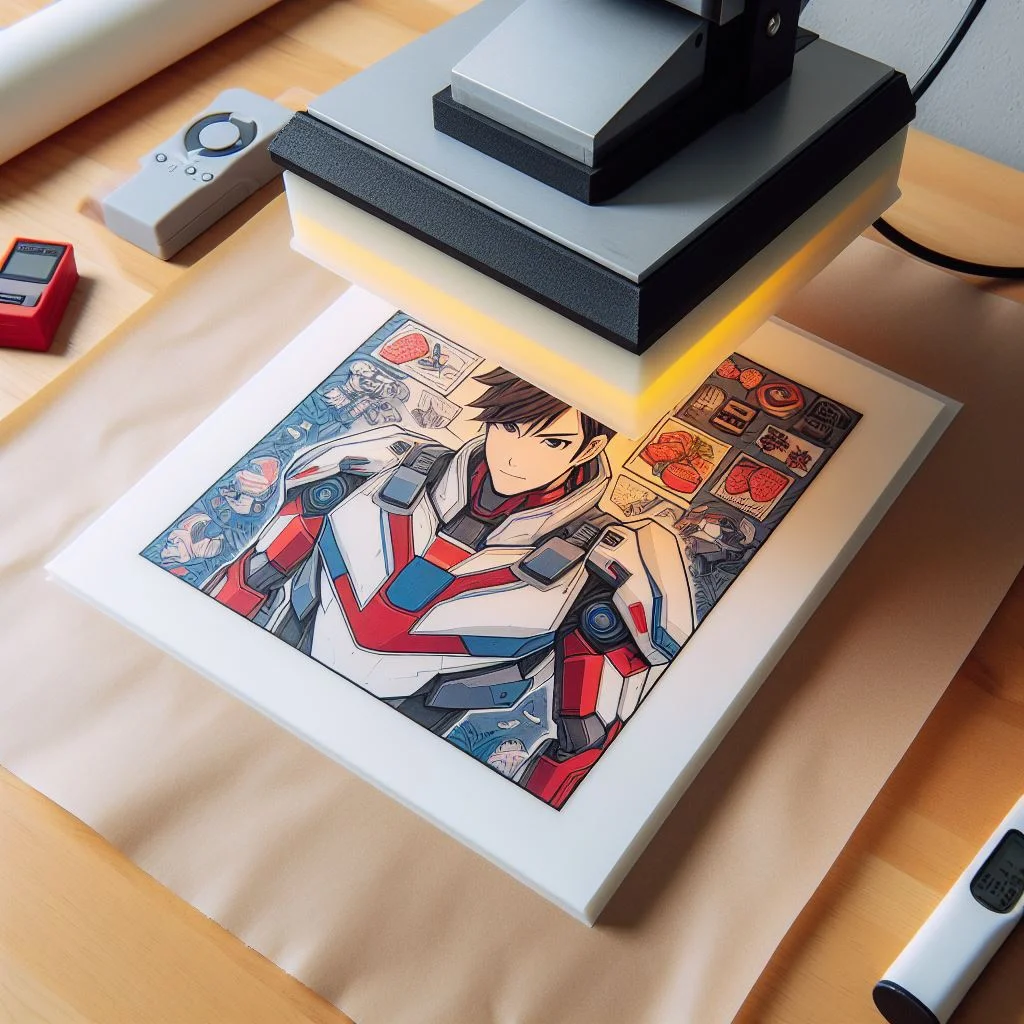
Troubleshooting Tips
- Colors Seem Dull: Check that your blank has a high enough polyester content. Increase press time or temperature slightly.
- Design is Blurry: Make sure your design is in focus before printing. Ensure your blank and design are tightly secured to prevent shifting during pressing.
- Ghosting (Faint Duplicate Image): Ensure your design is completely covered by butcher paper to prevent excess ink from transferring.
Design Inspiration
- The Possibilities Are Endless: Emphasize the versatility of tie-dye sublimation. Mention patterns like spirals, bullseyes, stripes, and even more intricate designs like mandalas or photorealistic images.
- Visual Showcase: Include a few eye-catching images of different tie-dye sublimation projects – t-shirts, phone cases, tote bags, etc. If you have examples using our products, that’s even better!
- Where to Find More: Provide links to resources like:
- Pinterest boards dedicated to sublimation designs
- Design marketplaces with sublimation-ready templates
- Subli Genius Print blog or social media (if you feature customer projects)
Sublimation vs. Other Methods:
Another popular option, especially for Cricut users, is Infusible Ink. Understanding the differences between these two methods will help you choose the right technique for your projects. Let’s dive in!
Comparison Table
| Feature | Tie-Dye Sublimation | Infusible Ink |
|---|---|---|
| Process | Prints a design onto sublimation paper, then transfers it using heat. | Pre-cut designs or hand-cut designs from Infusible Ink sheets are transferred using heat. |
| Materials Needed | Sublimation printer, ink, paper, heat-resistant tape, heat press. | Cricut machine (or compatible), Infusible Ink sheets or pens/markers, heat-resistant tape, heat press or EasyPress. |
| Compatible Blanks | Items with a high polyester content or a special sublimation coating. | Cricut-specific blanks or items with a compatible Infusible Ink surface. |
| Color Vibrancy | Extremely vibrant, wide range of colors including gradients. | Vibrant, but color options may be more limited. |
| Design Complexity | Ideal for intricate patterns and photorealistic images. | Better suited for simpler designs and crisp lines. |
| Durability | Designs are permanently embedded in the fabric, won’t crack, fade, or peel. | Designs are highly durable, but may be slightly less permanent than sublimation. |
Tie-Dye Sublimation vs. HTV (Heat Transfer Vinyl)
| Feature | Tie-Dye Sublimation | HTV |
|---|---|---|
| Process | Designs printed on sublimation paper, transferred with heat | Designs cut from vinyl, applied with heat |
| Materials Compatibility | High-polyester blanks or items with sublimation coating | Wider range of fabrics (cotton, blends, etc.) |
| Color & Design Options | Vibrant colors, gradients, intricate designs, photos | Wide color range, specialty finishes (glitter, etc.), less ideal for complex designs |
| Durability | Extremely durable, embedded into the fabric | Very durable, may peel over time with extensive wear |
Pros and Cons of Tie-Dye Sublimation
| Pros | Cons |
|---|---|
| Incredible color vibrancy and range | Requires specific blanks (high polyester content) |
| Long-lasting, won’t fade, crack, or peel | Initial investment in equipment can be higher |
| Photorealistic capabilities | Potential for ghosting if not done correctly |
| Soft hand-feel, design becomes part of the fabric |
How To Bleach And Tie Dye A Sublimation T-shirt
Customizing your apparel can be fun and creative by bleaching and tie-dyeing a sublimation T-shirt. It’s crucial to note that sublimation is most effective on polyester fabrics, while traditional tie-dye methods (using reactive dyes) are meant for natural fibers like cotton.
Bleaching polyester can also be tricky because it doesn’t react with bleach the same way as cotton does. Below is a step-by-step guide on how to achieve a bleached and tie-dye effect on a sublimation T-shirt:
Materials Needed:
- Sublimation T-shirt (100% polyester or a polyester blend).
- Bleach (for synthetic fabrics, like Rit Color Remover or Out White Brite).
- Rubber bands or string (for tying).
- Plastic squeeze bottles or spray bottles.
- Protective gloves and goggles.
- Plastic wrap or a plastic bag.
- A well-ventilated workspace or outdoor area.
- Optional: Fabric dye (if you want to add color after bleaching).
Step 1: Prepare the T-Shirt
- Wash the T-shirt to remove any chemicals or residues that might interfere with the bleaching process.
- Lay the shirt flat and decide on your tie-dye pattern (e.g., spiral, crumple, stripes).
- Use rubber bands or string to tie the shirt tightly in the desired pattern. The tighter the ties, the more defined the design will be.
Step 2: Bleach the T-Shirt
- Test First: Before applying bleach to the entire shirt, test it on a small, inconspicuous area to ensure it reacts well with the fabric.
- Prepare the Bleach Solution:
- For polyester, use a color remover like Rit Color Remover or Out White Brite instead of chlorine bleach, as chlorine bleach may not work effectively on synthetic fabrics.
- Follow the instructions on the packaging to mix the solution.
- Apply the Bleach:
- Use a spray bottle or squeeze bottle to apply the bleach solution to the tied shirt. Focus on the areas where you want the most color removal.
- For a gradient effect, you can dip parts of the shirt into the bleach solution.
- Wait and Monitor:
- Let the bleach sit for 10–20 minutes, checking frequently to avoid over-bleaching. Polyester may take longer to react than cotton.
- Rinse Thoroughly:
- Once you achieve the desired effect, rinse the shirt under cold water to stop the bleaching process. Remove the rubber bands and rinse until the water runs clear.
Step 3: Add Tie-Dye Colors (Optional)
If you want to add color to the bleached areas, you can use sublimation dyes or fabric dyes designed for synthetic fabrics. Here’s how:
- Prepare the Dye:
- Use dyes specifically formulated for polyester (e.g., iDye Poly or Rit DyeMore).
- Mix the dye according to the instructions.
- Apply the Dye:
- Use squeeze bottles or brushes to apply the dye to the bleached areas. You can create patterns, gradients, or full coverage.
- Set the Dye:
- Wrap the shirt in plastic wrap or place it in a plastic bag to keep it moist.
- Heat-set the dye using a heat press or iron (follow the dye manufacturer’s instructions for temperature and time). This step is crucial for polyester fabrics.
Step 4: Wash and Dry
- Rinse the shirt in cold water until the water runs clear.
- Wash the shirt separately in cold water with a mild detergent to remove any excess dye.
- Air dry or tumble dry on low heat.
Tips and Considerations:
- Polyester Limitations: Polyester doesn’t absorb bleach or dye as easily as cotton, so results may be subtler. For more dramatic effects, consider using a cotton-polyester blend.
- Safety: Always work in a well-ventilated area and wear protective gear when handling bleach or dyes.
- Experimentation: Test different tying techniques and dye application methods to achieve unique designs.
If I tie dye a heat pressed shirt will the sublimation part dye too?
The sublimated design can be influenced by tie-dyeing a heat-pressed sublimation shirt, which can result in creative and unique outcomes. To maintain the original design, be careful and test your techniques beforehand!
1. Sublimation on Polyester:
- Sublimation dyes are permanently bonded to polyester fibers during the heat-press process. The design becomes part of the fabric, making it durable and resistant to fading.
- However, polyester is not as receptive to traditional tie-dye techniques (which use reactive dyes designed for natural fibers like cotton).
2. What Happens When You Tie-Dye a Sublimation Shirt?
- Sublimated Areas: The sublimated design may act as a resist, meaning the tie-dye might not fully penetrate those areas. This can create interesting layered effects, but the original sublimation design will still be visible to some extent.
- Bleaching: If you use bleach or color remover, it may lighten or alter the sublimated design, especially if the shirt is 100% polyester. Bleach doesn’t react with polyester as strongly as it does with cotton, but it can still cause fading or discoloration.
- Dyeing: If you apply fabric dye (e.g., Rit DyeMore for synthetics), the dye may blend with or partially cover the sublimated design, depending on how the dye is applied and how long it sits.
3. How to Minimize Impact on the Sublimated Design:
- Use Gentle Techniques: Instead of fully submerging the shirt in dye, try spot-dyeing or spraying dye onto specific areas to preserve the sublimated design.
- Avoid Bleach: If you want to keep the sublimated design intact, avoid using bleach or color remover, as it can lighten or distort the original print.
- Test First: Experiment on a small, inconspicuous area of the shirt to see how the sublimated design reacts to the dye or bleach.
4. Creative Outcomes:
- Layered Effects: Tie-dyeing over a sublimated design can create unique, layered patterns. The sublimated design may show through the dye in interesting ways, especially if you use lighter dye colors or less saturation.
- Resist Patterns: The sublimated areas may act as a resist, creating a contrast between the dyed and undyed parts of the shirt.
5. Best Practices:
If you’re open to experimenting, embrace the potential for the sublimated design to blend with the tie-dye for a one-of-a-kind look.
If you want to preserve the sublimated design as much as possible, focus the tie-dye on areas without sublimation or use subtle dye applications.
Don’t wait any longer – start your sublimation journey with Subli Genius Print today! Visit our website to browse our selection, and subscribe to our newsletter for exclusive offers and inspiration.
